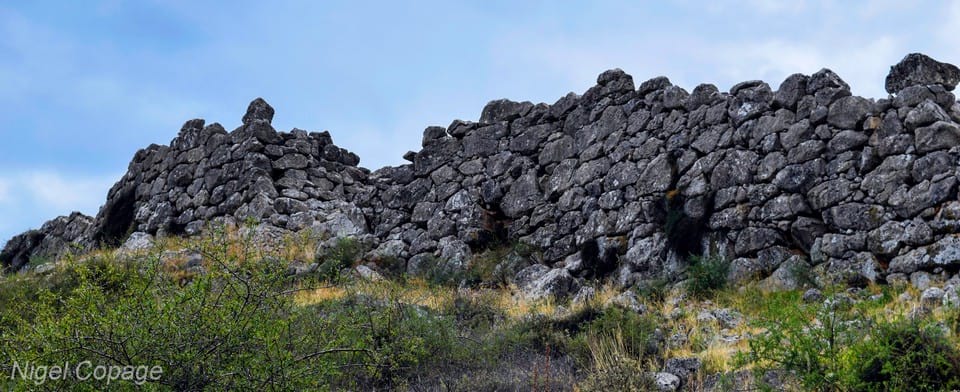
Midea was one of the three most important Mycenean centres in the Argolis along with Tiryns and Mycenae itself. It is one of the largest and best preserved such citadels and its importance is evidenced by its impressive Cyclopoean walls, its extensive fortifications and the lavish tombs at the nearby Mycenean cemetery of Dendra.
Mythology
Further testament to the ancient city’s significance is the number of times it is mentioned in Greek mythology. According to one legend, Midea was founded by King Perseus, the son of Zeus and Danaë, and was originally called Perseuspolis. The city is also said to have been named after Midea, a Phrygian woman with whom Electryon, King of Mycenae, had an illegitimate son. It is mentioned as having been owned by Proetus, the king of Argos and Tiryns and in yet another legend is where Hippodamia, the wife of Pelops, was banished.
History
The hill on which Midea is built was already occupied by the late Neolithic period (5th to 4th Millenia BC) and by the early and middle Bronze Age had developed into a flourishing settlement.
During the second millennium BC Midea became an important Mycenean city. It occupied a strategic position approximately midway between Tiryns and Mycenae and its commanding position dominated the eastern Argive plain. Of these three Mycenean cities, Midea was the highest at 270m above sea level.
The heyday of Midea was the 13th century BC and this was when the substantial Cyclopoean defensive wall was built. The wall was some 450m in length, around 6m in width and up to 7m in height. The southeast of the hill did not need to be fortified as the steep rocky slopes provided natural protection.
The walled city had two monumental entrances, one to the east which led to the upper levels of the acropolis and one to the west which gave access to the lower levels. The total area enclosed by the defensive wall system was 24 stremmata (24,000 square metres). Various building complexes have been discovered within the city boundaries, especially near the two gates.
Other finds at the site include the remains of a sewage system, fragments of murals which indicate that some rooms were painted, various clay pots as well as stone jars and seals some of which had inscriptions in the early form of Greek Linear B. The presence of uncut and partially worked precious stones suggest that Midea had workshops producing jewellery.
A number of clay idols and in particular a large wheelable terracotta figure of a goddess indicate that Midea was the site of religious cults while the linear B inscriptions demonstrate that it was also an administrative centre as were neighbouring Mycenae and Tiryns.
Just 1500 metres west of Midea is the necropolis of Dendra, one of the richest Bronze Age cemeteries in the Peloponnese. Findings from these tombs include both male and female burials and a wealth of grave goods such as silver and gold cups, jewellery, semi-precious stones, bronze weapons and armour. In a few cases horses were found buried just outside the tombs. It is clear that these tombs were for members of the elite, almost certainly from Midea, and this is further evidence of a highly organised and hierarchical society. Some of the finds can be seen at the Archaeological Museum of Nafplion including a magnificent suit of bronze armour. But most are exhibited at the National Archaeological Museum in Athens.
At the end of the 13th century Midea was hit by a powerful earthquake which destroyed much of the city and its defences. The crushed skeleton of a young girl has been found under large stones in a room near the east gate and it appears that she was a victim of the earthquake. There is also evidence of a major fire which decimated buildings within the acropolis and it is possible the conflagration was a direct result of the earthquake.
Midea never recovered from this and along with other Mycenean centres went into decline during the “Bronze Age Collapse” in which such palatial citadels were reduced to mere villages. During the Archaic period it is believed that the hill of Midea was used for religious purposes, possibly as a sanctuary. In or around 468 BC what remained of Midea was destroyed by Argos (along with Tiryns and Mycenae) and the inhabitants were moved to Argos. However the hill was sporadically occupied during the late Roman period and Byzantine era before being finally abandoned.
Excavations
Systematic excavations at Midea began much later than in Tiryns or Mycenae with the first being conducted in 1939 by the Swedish School of Archaeology under Axel W Persson (who also excavated Dendra and Asine). In 1963 a Greek-Swedish collaboration conducted a trial excavation near the East Gate. After a break work was resumed in 1983 and further investigations from 1996 to 2000 revealed a complex of rooms in the West Gate area. Between 2011 and 2015 the site was enhanced as part of a project jointly funded by the EU and the Greek state.
Click here for information on tickets, opening hours etc for Midea
Click here for information on tickets, opening hours etc for Dendra
Click here for a video of Midea
Click here for a video of Dendra
Click here for a Google Map to Midea
Click here for a Google Map to Dendra
 Midea
Midea
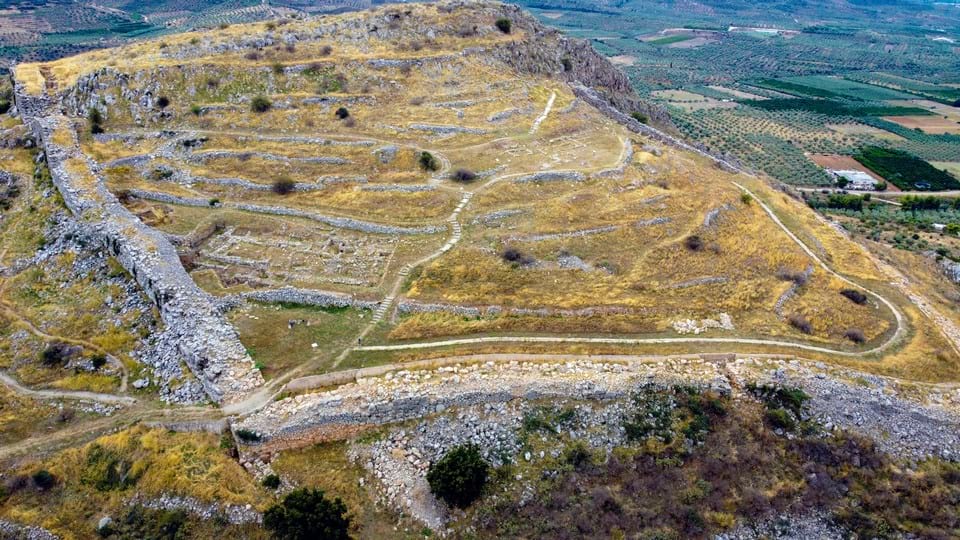 Midea
Midea
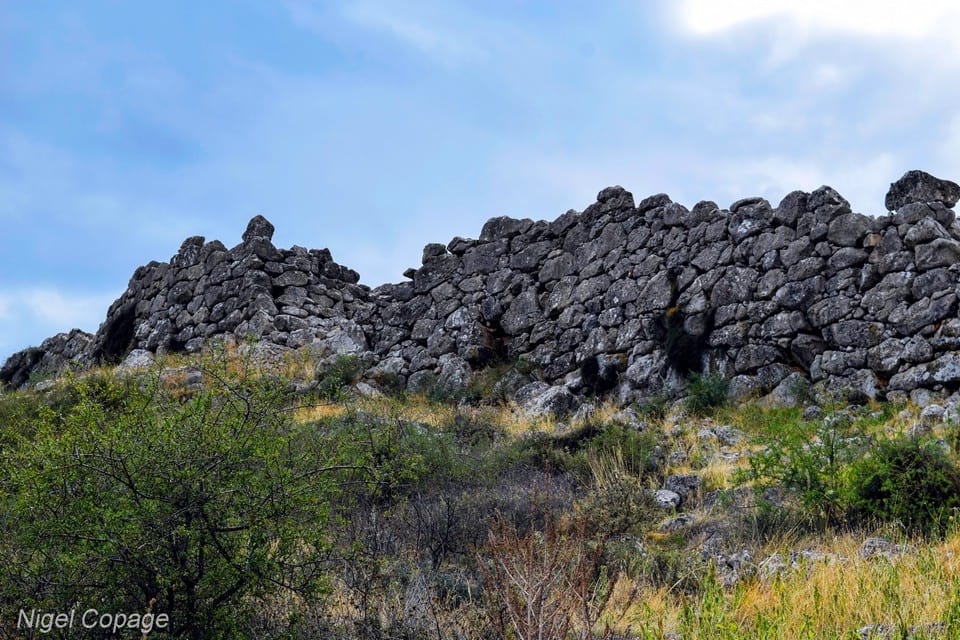 Midea
Midea
 Aerial view of Midea from the site leaflet produced by Διεύθυνση Προϊστορικών και Κλασσικών Αρχαιοτήτων
Aerial view of Midea from the site leaflet produced by Διεύθυνση Προϊστορικών και Κλασσικών Αρχαιοτήτων
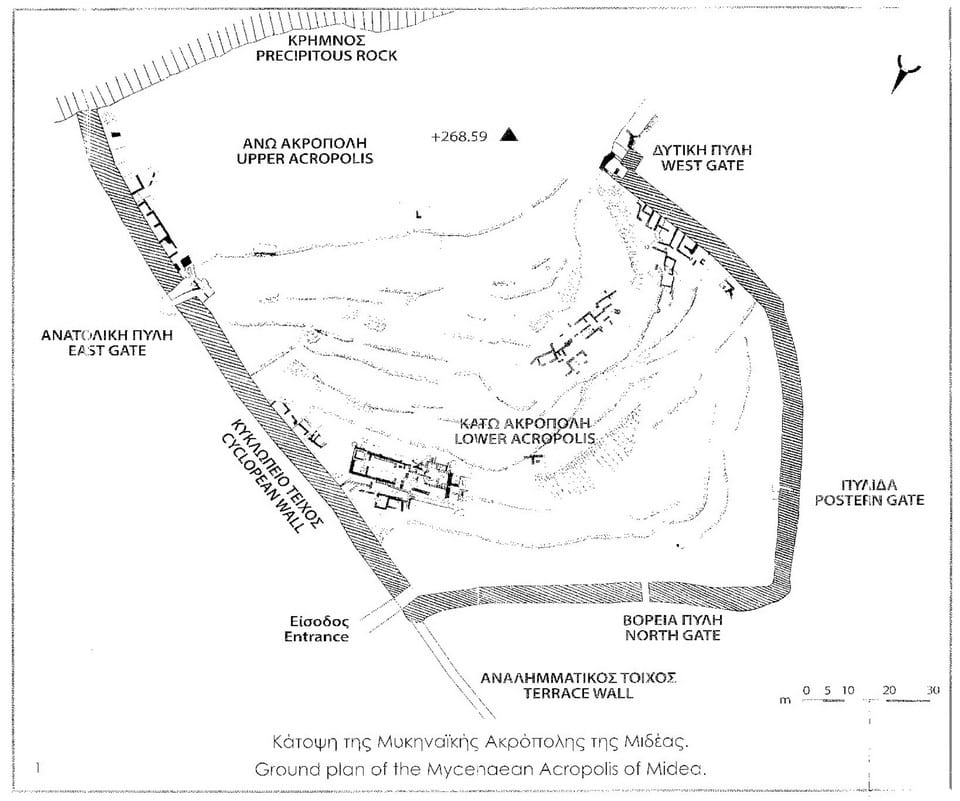 Ground plan of Midea from the site leaflet produced by Διεύθυνση Προϊστορικών και Κλασσικών Αρχαιοτήτων
Ground plan of Midea from the site leaflet produced by Διεύθυνση Προϊστορικών και Κλασσικών Αρχαιοτήτων
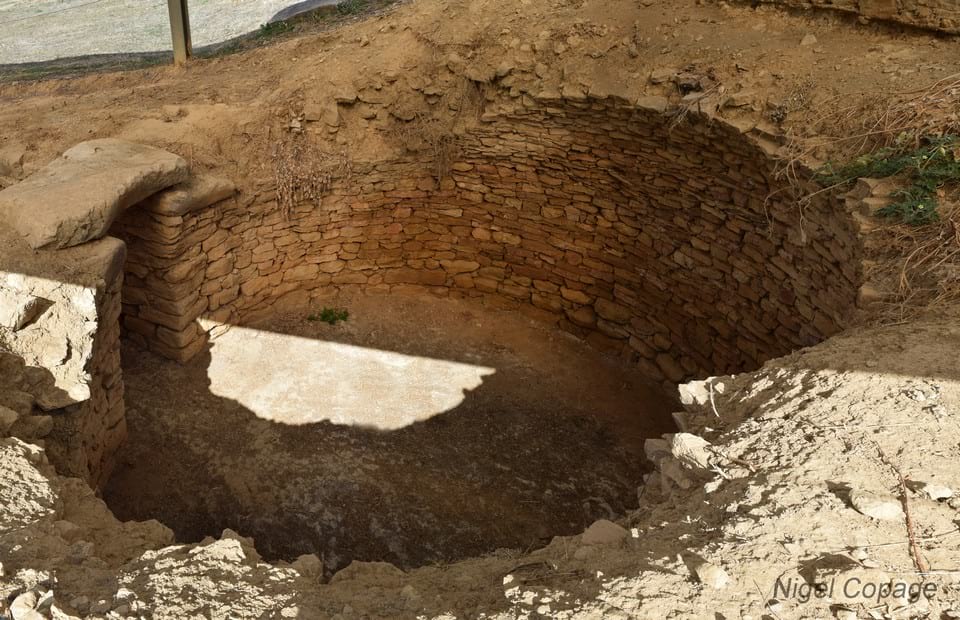 The tholos tomb at Dendra
The tholos tomb at Dendra

Entrance to the tholos tomb at Dendra
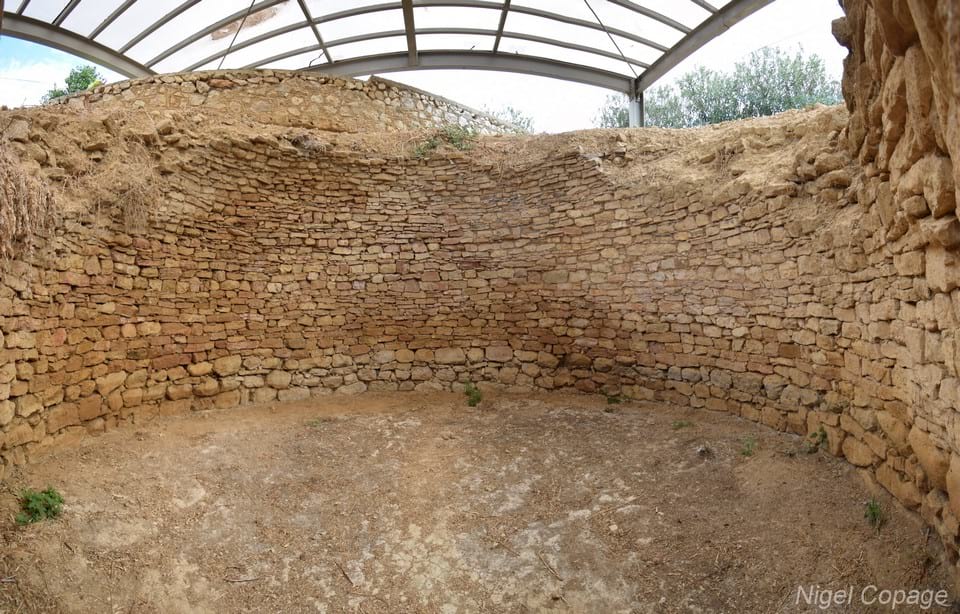 The tholos tomb at Dendra
The tholos tomb at Dendra
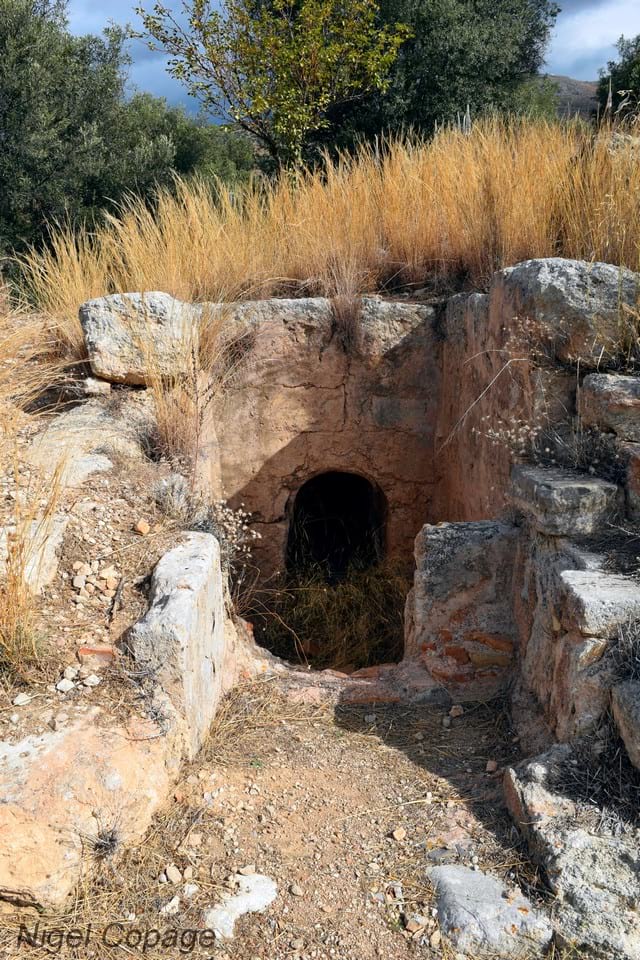
A chamber tomb at Dendra
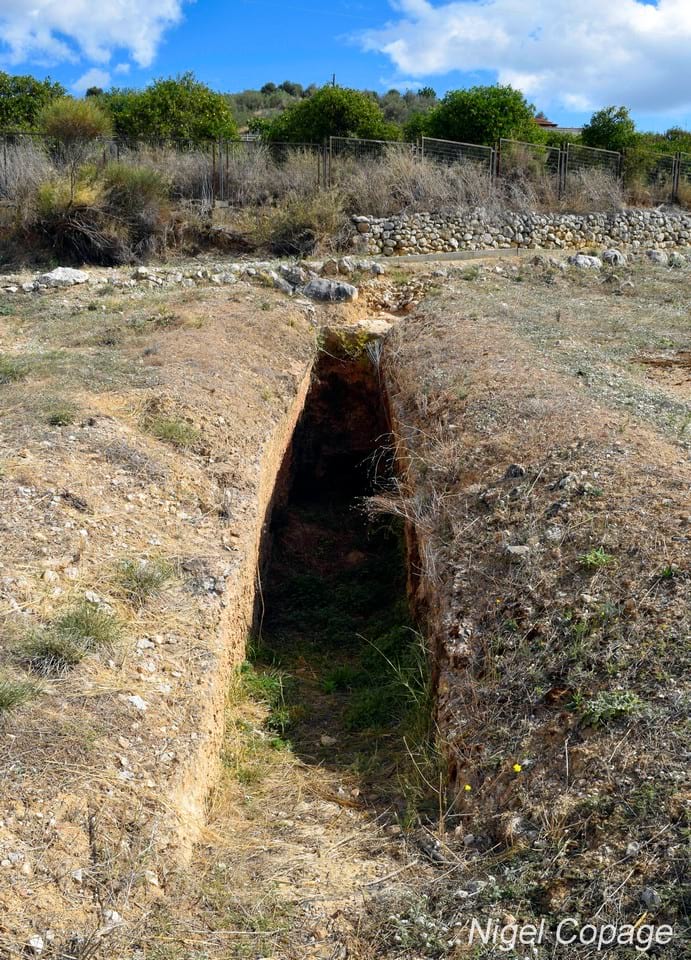
A chamber tomb at Dendra

A chamber tomb at Dendra